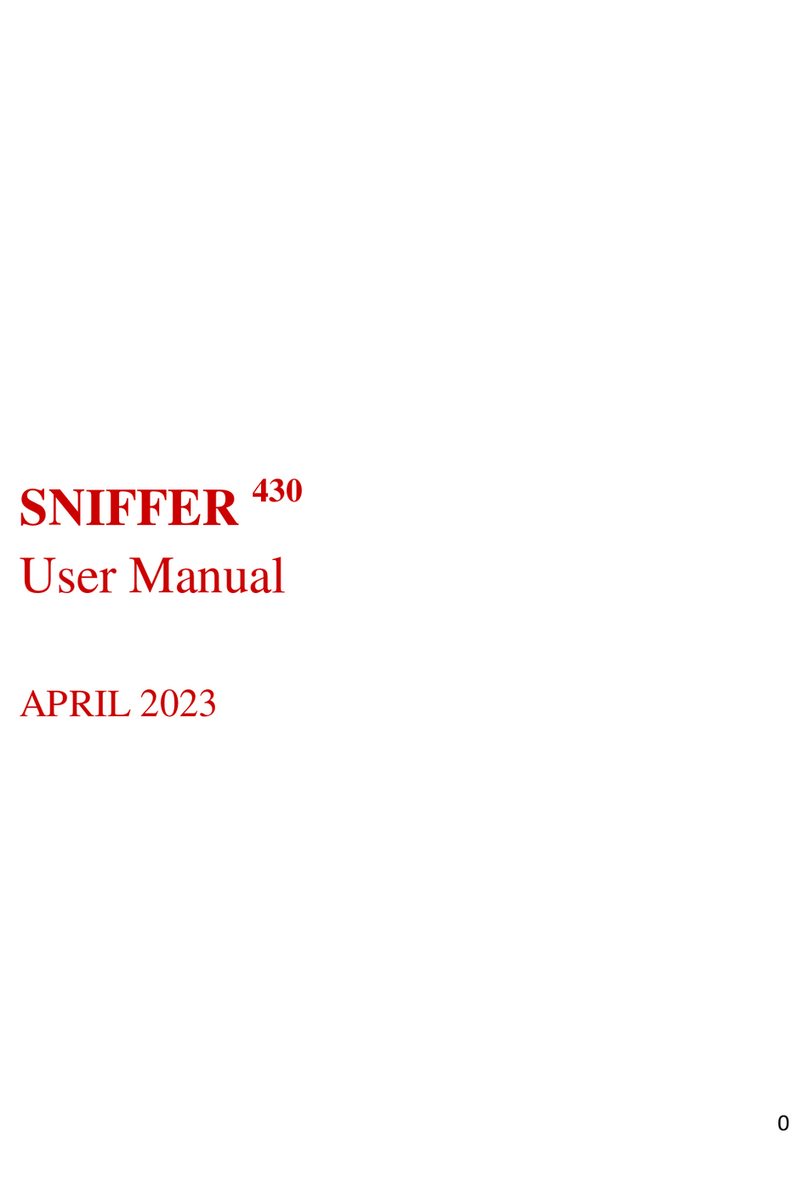5. Operation
5.1. Switch on Device and H2 Sensor in an area where no traces of H2gas are
present. Device On/Off button is located on the top edge of Device (Figure
4). The H2 Sensor On/Off button is located on the top edge of H2 Sensor
(Figure 4).
5.2. Once Device detects the wireless H2 Sensor, the SENSOR CONNECTED
button will be shown in blue color (Figure 5).
5.3. Switch on H2 Sensor pump using the PUMP button (Figure 5) on Device
screen.
5.4. After the H2 Sensor is switched on, initial heating of the sensor is
performed (the system cannot be used during the heat up time). Once the
H2 Sensor is available for work a beep sound begins.
Note: Please note that initial values of PPM may be above zero due to different factors
such as air humidity or traces of gas trapped inside of the sensor from the previous use. In
such a case, the user can wait several more minutes with the H2 Sensor pump switched
on, until the PPM value will drops to zero. We recommend always keep the pump working
to allow fast air circulation through H2 Sensor. Even if the initial PPM values are above zero
for any reason, it does not limit or prevent performing a leak detection.
5.5. Stream tracer gas under pressure into piping or vessel after closing all
valves and openings which gas can escape through.
5.6. Walk slowly along the pipe or vessels, while directing H2 Sensor towards
the examined structure.
5.7. When H2 gas is detected, PPM value will rise. Walk around the area where
gas is detected to establish where PPM values are the highest. Take PPM
readings using TAKE A READING button (Figure 5) to assist in finding the
area with the highest PPM readings. This area may have the highest
probability of leak (but not always).
5.8. Push on the speaker button (Figure 5) to switch on/off beeping sound used
to assist in leak detection.
5.9. Adjust the brightness of the screen using + and – buttons (Figure 5).
5.10. Clear reading in the reading graph by pressing CLEAR button (Figure 5).
5.11. At the end of the work, switch off the device using the Device On/Off
button on the screen (Figure 5) and wait until the screen switches off.
Switch off H2 Sensor by pressing a Switch On/Off button (Figure 4).
5.12. Clean Sensor filter from large particles using a brush if needed.




























